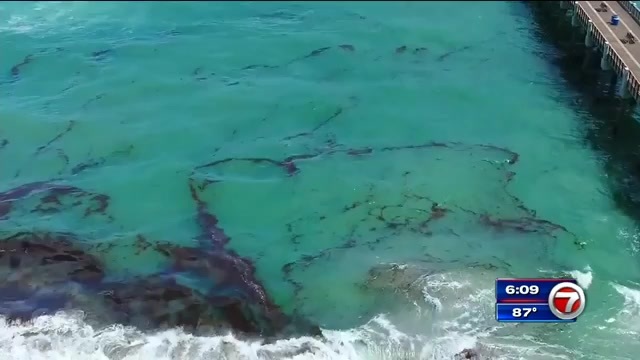TAMPA, Fla. (AP) — Fears over red tide prompted Florida officials to briefly prohibit aquaculture farmers from harvesting in lower Tampa Bay, although the ban was lifted Saturday morning, state officials said.
The Florida Department of Health in Hillsborough County issued a health advisory warning people of possible respiratory problems from red ride in lower and middle Tampa Bay.
The Tampa Bay Times reported that fish kills “suspected to be related to red tide” were discovered in both Pinellas and Manatee counties over the past week, according to a Florida Fish and Wildlife Conservation Commission.
The harvesting activity was initially closed May 26 for the farmers who hold 10 leases in the area. State officials told the Times those farmers were permitted to resume operations at sunrise Saturday.
The Department of Environmental Protection, which has offered frequent updates on the Piney Point situation, said late Friday that wildlife officials are “currently investigating reports of fish kills in Boca Ciega, Pass-a-Grille and St. Pete Beach.”
Elevated levels of red tide have shown up near the Hillsborough-Manatee line, in the eastern portion of the bay, according to a conservation commission map. That is where approximately 215 million gallons of polluted wastewater from a leaking reservoir at the old Piney Point fertilizer plant site were released in early April.
Brian Rosegger, co-founder of Lost Coast Oyster Co. in Tampa Bay, has worried about a toxic algal bloom cropping up and cutting into his business ever since the contaminated Piney Point discharge.
The released wastewater contained elevated levels of nitrogen, which can encourage blooms to grow. The discharge alone would not cause red tide, which is naturally occurring, to show up in Tampa Bay, scientists have said. But nutrients from the polluted water could serve as fuel for the organisms in red tide, according to researchers.
It’s unclear to what extent, if any, the Piney Point discharges might be responsible for the toxic blooms.
“All of us were expecting algae blooms to occur,” said Peter Clark, President of Tampa Bay Watch, told WTSP. “You simply cannot — with that number of nutrients — not have the bay respond to those kinds of nutrients that were discharged. So now is the bay is heating up and we’re starting to see the results of all those nutrients in the form of algae blooms.”
Copyright 2024 The Associated Press. All rights reserved. This material may not be published, broadcast, rewritten or redistributed.

